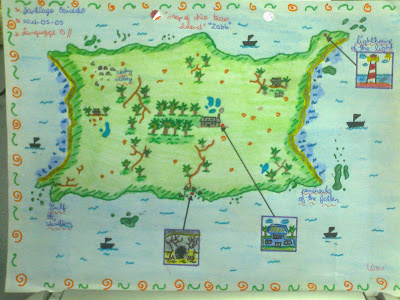The City where Bolivar and San Martín met
 |
| Monument to Bolívar and San Martín |
My hometown, the city that welcomes (and shelters) everyone, literally. My 500th article had to be special somehow so what better way to celebrate than to write about my city on her foundation date.
Of course now we know that the date is inaccurate. Guayaquil was not founded by the Spaniards on a July 25th, 1535 but on August 15th, 1534 because Guayaquil was founded not once but several times with July 25th being the definitive.
 |
| City Hall building |
Its full name is Santiago de Guayaquil and it rises between a river (the Guayas) and a estuary (El Salado). cacique (the Huancavilcas were the originals owners of these lands). Much has been said about that name. Most people like the legend that says that in the long past there was a Huancavilca chief or cacique (the Huancavilcas were the original owners of these lands). His name was Guayas and his wife was named Quil or Quile. Instead of being subjugated by the Spaniards they decided to kill themselves and that is why the place they died in was called Guayaquil and by extension the city that was founded there. There are others that say that there was a Chonocacique (the Chonos were another group that also lived around here originally) who was quite respected and whose name was Guayaquile. He died fighting the Spaniards and somehow his name became our name. But there is also evidence the name existed long before that. So at the moment there is nothing certain though it is said the name Guayaquil has a meaning and that is "Nuestra Casa Grande" (Our Large House).
 |
| El Malecón River |
As I write these words there are almost three million people living in this city with some more commuting every day from neighboring cities to work here. Its most emblematic place is perhaps our riverside where the monument to Bolivar and San Martin can be found aside museums, open gardens, eating places, all kinds of stores, an IMAX theater, the Public Clock, a library, and several underground parking lots. The riverside is connected to the oldest neighborhood of the city called Las Peñas and there are stairs that take you up to one of the highest points in Guayaquil, the top of the Santa Ana hill, one of the several hills that stand next to the Guayas river.
 |
| Night view of Santa Ana hill |
Night life in my city is intense, agitated sometimes, since Guayaquileans love partying as much as they love good food. There is no way to find something to please everyone because there are all sorts of culinary combinations to the simple and spicy, to the gourmet like and fancy. This time of the year and October are the best to go out and enjoy what Guayaquil has to offer since it does not rain at all and the weather is mild as though it were spring all the time.
There are of course bad aspects, places not to go and insecurity is an issue but still if you know where to go, what to do and have some friends to hang out with then that is not usually a problem.
 |
| Plaza de San Francisco |
Guayaquil is going to be five hundred years old soon but remains as young as ever thanks to the spirit of its people that love happiness and does not give in to despair or stress. We like to enjoy things and thus we enjoy our families, our work and our home which is Guayaquil.
 |
| Cathedral with a Simón Bolívar statue in front |



Comments